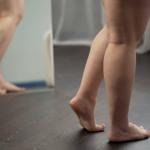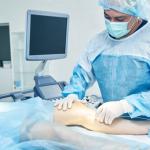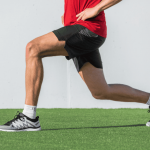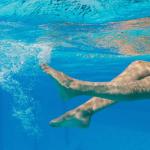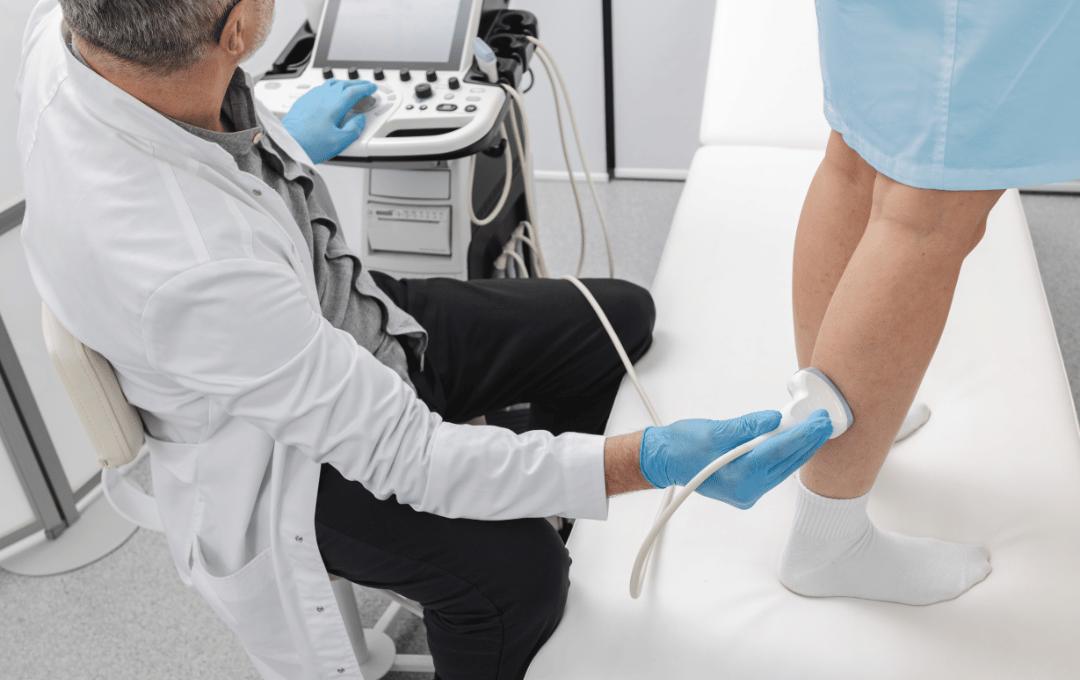
Varicose veins may begin as a cosmetic concern, but they often bring along more serious issues like pain, heaviness, swelling, or leg cramps. Left untreated, these bulging veins can increase the risk of severe health conditions, such as venous ulcers and blood clots. If you have them, you’re probably wondering how to safely and effectively get rid of varicose veins.
Here is what you need to know about how to get rid of varicose veins through effective non-surgical treatments and what even causes them in the first place.
Understanding How Varicose Veins Develop
It’s helpful to understand how varicose veins develop when learning how to get rid of varicose veins in the legs. Varicose veins are caused by underlying vein disease, or chronic venous insufficiency. These conditions damage veins, causing blood to pool in the areas of the body, such as the legs.
Veins can become damaged over time due to factors such as high blood pressure in the leg veins, prolonged sitting or standing, lack of exercise, smoking, or a blood clot in a deep vein. When vein valves malfunction, blood can pool in the lower extremities. This leads to the formation of varicose veins.
Can You Get Rid of Varicose Veins?
It is possible to get rid of varicose veins with medical treatments that can permanently close or eliminate damaged varicose veins. Treatments for varicose veins either close off the damaged vein so blood can flow through healthier veins or physically remove the vein. Methods include minimally invasive procedures such as laser or radiofrequency heat, injection of a solution, or use of a medical adhesive. More invasive options involve surgical removal through minor cuts or ligation and stripping. Most varicose veins worsen over time if left untreated, so early treatment can prevent further complications.
How to Get Rid of Varicose Veins Without Surgery
USA Vein Clinics specializes in non-surgical treatments that help patients get rid of varicose veins. These outpatient procedures do not require general anesthesia, large incisions, or lengthy recovery. These methods are ideal for patients seeking fast, effective relief from varicose veins without a hospital stay. USA Vein Clinics offers a wide range of non-surgical treatments to address varicose veins at their source.
Endovenous Laser Vein Treatment (EVLT/EVLA)
This varicose vein treatment utilizes laser heat to close off the affected veins, allowing the body to reroute blood through healthier veins.
Ultrasound-Guided Sclerotherapy
Ultrasound-guided sclerotherapy targets veins near the skin’s surface, using real-time ultrasound imaging for precise targeting. A chemical solution is delivered through the vein, causing it to collapse and eventually close.
Varithena® Foam Treatment
Varithena® uses a specialized foam to seal damaged varicose veins shut.
ClariVein®
ClariVein® combines mechanical and chemical techniques. During this treatment, a catheter with a rotating tip releases a chemical agent to close and eventually dissolve the lesion.
VenaSeal™
VenaSeal™ uses a special medical adhesive delivered through a catheter to seal diseased veins. Once the adhesive seals the vein, blood will flow more efficiently through the undamaged veins.
Radiofrequency Ablation (RFA)
RFA heats the vein wall from the inside, causing the in the vein to contract and close off the vein.
Can Small Varicose Veins Be Treated?
Small varicose veins near the skin’s surface, often called spider veins, or reticular veins are typically treated with office-based, minimally invasive procedures. The primary goal of these treatments is to block the problematic vein, redirecting blood to healthier veins. Talking with a vein specialist about how to get rid of small varicose veins can be beneficial to learn both the cosmetic and medical benefits using one of the numerous effective, minimally invasive vein treatments available.
How to Know If You Need Varicose Vein Treatment
It’s not always easy to know when varicose veins have progressed to a medical concern. However, ignoring potential signs of varicose veins allows the condition to progress silently, escalating from mere cosmetic concerns to serious medical complications like chronic leg pain, skin damage (stasis dermatitis), or even non-healing venous ulcers.
If you notice any of the following signs, it may be time to pursue vein treatment:
- Leg pain, heaviness, or fatigue
- Swelling around the ankles
- Visible bulging veins that worsen with standing
- Skin changes, such as discoloration or thickening
A vein specialist can provide a proper diagnosis and help choose the best treatment plan for lasting symptom relief.
Contact USA Vein Clinics to Get Rid of Varicose Veins
If you want to know how to get rid of varicose veins on your legs, the best method is through minimally invasive vein treatments. USA Vein Clinics’ team of compassionate vein specialists can review your symptoms and recommend the best treatment for your varicose veins.
Don’t wait until symptoms get worse. Take the first step toward relief today by scheduling your consultation.
FAQs about How to Get Rid of Varicose Veins
Can You Get Rid of Varicose Veins Without Surgery?
Although varicose veins are not curable, they can be treated without surgery. Medical professionals can help reduce the appearance and symptoms of varicose veins using various non-surgical methods.
What does it feel like when varicose veins are getting worse?
When varicose veins worsen, you may notice persistent leg swelling and aching, along with pain that improves with movement.
Are varicose vein treatments covered by insurance?
Most insurance plans, including Medicare and Medicaid, typically cover varicose vein and spider vein treatments because they are symptoms of vein disease.
What happens if varicose veins are left untreated?
If varicose veins are left untreated, they can lead to chronic venous insufficiency (CVI), which causes leg pain, swelling, fatigue, and visible veins. As CVI progresses, you are at an increased risk for non-healing leg sores and dangerous blood clots.



